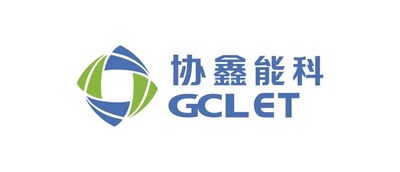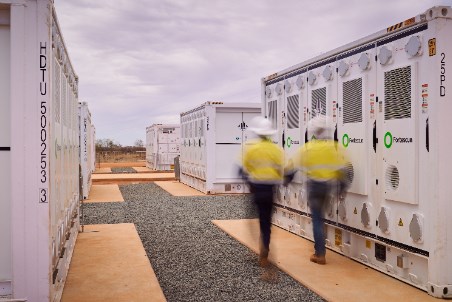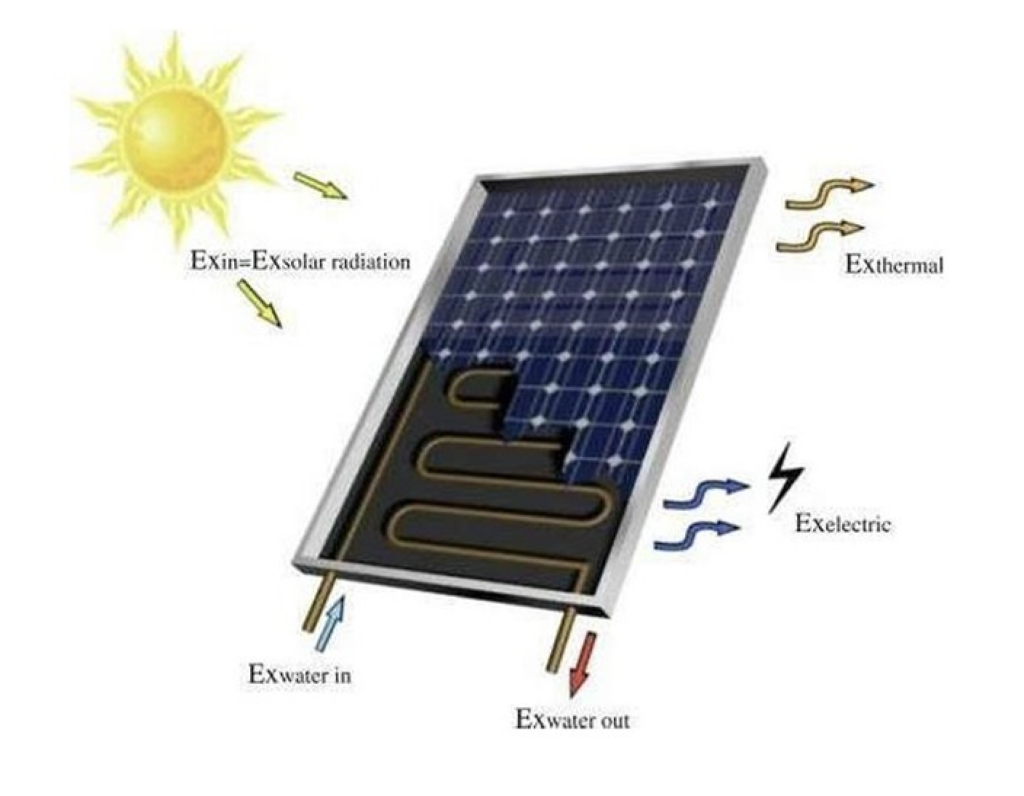GCL Energy Technology Expands Global Footprint with Two Major Clean Energy Projects in Partnership with Indonesia’s PLN IP – Laotian Times

Report on GCL and PLN Indonesia Power Clean Energy Partnership
1.0 Executive Summary
On October 31, 2025, GCL Intelligent Energy (Suzhou) Co., Ltd., a subsidiary of GCL Energy Technology (GCLET), entered into shareholder agreements with PLN Indonesia Power (PLN IP), a subsidiary of Indonesia’s state utility, Perusahaan Listrik Negara (PLN). The agreements formalize the development of two 100MW solar energy projects in Indonesia. This initiative represents a significant public-private partnership aimed at advancing Indonesia’s renewable energy capacity and directly supports the achievement of several United Nations Sustainable Development Goals (SDGs), particularly SDG 7 (Affordable and Clean Energy) and SDG 17 (Partnerships for the Goals).
2.0 Project Details
The agreements cover two large-scale clean energy installations, both designated as priority initiatives under Indonesia’s Hijaunesia Plan. The primary objective of these projects is to increase the share of renewable energy in the national grid, contributing to climate action and sustainable infrastructure development.
- 100MW Banyuwangi Ground-Mounted Solar Project: A conventional utility-scale solar farm designed to provide a stable supply of clean electricity.
- 100MW Gajah Mungkur Floating Solar Project: An innovative solar installation on a body of water, demonstrating advanced sustainable infrastructure in line with SDG 9.
3.0 Alignment with Sustainable Development Goals (SDGs)
The partnership and resulting projects are fundamentally aligned with the global 2030 Agenda for Sustainable Development. The initiative’s contributions are concentrated in the following areas:
- SDG 7 (Affordable and Clean Energy): The core objective is to increase access to affordable, reliable, and modern energy by adding 200MW of solar capacity to Indonesia’s grid, thereby increasing the share of renewable energy in the country’s energy mix.
- SDG 13 (Climate Action): By generating power from solar resources, the projects will displace fossil fuel-based energy, directly contributing to the mitigation of climate change and supporting Indonesia’s national climate commitments.
- SDG 17 (Partnerships for the Goals): The collaboration between GCL Group, a global entity, and PLN IP, an Indonesian state-owned enterprise, exemplifies a cross-border public-private partnership essential for mobilizing technology and financial resources to achieve sustainable development.
- SDG 9 (Industry, Innovation, and Infrastructure): The development of both ground-mounted and floating solar facilities promotes the building of resilient, sustainable, and innovative energy infrastructure.
4.0 Future Collaboration and Strategic Outlook
Discussions held during the signing ceremony indicated a strong potential for expanded collaboration. PLN IP expressed interest in leveraging GCL’s technical expertise to further support Indonesia’s sustainable energy transition. This future partnership is envisioned to extend beyond solar and contribute to a broader range of SDGs.
Potential areas for future joint ventures include:
- Photovoltaics
- Waste-to-energy projects (contributing to SDG 11: Sustainable Cities and Communities)
- Wind power
- Energy storage solutions
This long-term strategic alignment underscores a mutual commitment to advancing sustainable development and green energy infrastructure throughout Indonesia.
Analysis of Sustainable Development Goals in the Article
1. Which SDGs are addressed or connected to the issues highlighted in the article?
-
SDG 7: Affordable and Clean Energy
- The article’s central theme is the development of two large-scale solar energy projects in Indonesia. This directly supports the goal of ensuring access to affordable, reliable, sustainable, and modern energy for all. The text explicitly mentions “clean energy projects,” “renewable energy,” and GCL’s mission of “Bringing Green Power to Life.”
-
SDG 9: Industry, Innovation, and Infrastructure
- The construction of a “100MW Banyuwangi ground-mounted solar project” and a “100MW Gajah Mungkur floating solar project” represents the development of resilient and sustainable infrastructure. These projects involve adopting clean and environmentally sound technologies (photovoltaics) on a large scale, which is a key aspect of this goal.
-
SDG 13: Climate Action
- The article highlights that these projects will “support Indonesia’s shift toward renewable energy” and contribute to the “global clean energy transition.” By developing solar power capacity, the initiative directly contributes to mitigating climate change by reducing reliance on fossil fuels and lowering greenhouse gas emissions.
-
SDG 17: Partnerships for the Goals
- The entire initiative is based on a partnership between GCL Group, a Chinese company, and PLN Indonesia Power (PLN IP), a subsidiary of Indonesia’s state-owned utility. The signing of “shareholder agreements” exemplifies a public-private and international partnership aimed at achieving sustainable development, which is the core of SDG 17.
2. What specific targets under those SDGs can be identified based on the article’s content?
-
Target 7.2: By 2030, increase substantially the share of renewable energy in the global energy mix.
- The article details the creation of 200MW of new solar power capacity. This directly contributes to increasing the proportion of renewable energy in Indonesia’s energy supply, aligning with the government’s “Hijaunesia Plan — a government-led program to accelerate renewable energy development.”
-
Target 7.a: By 2030, enhance international cooperation to facilitate access to clean energy research and technology… and promote investment in energy infrastructure and clean energy technology.
- The partnership between China’s GCL Group and Indonesia’s PLN IP is a clear example of international cooperation. The signing of shareholder agreements for these projects represents a significant investment in clean energy infrastructure, facilitated by this cross-border collaboration.
-
Target 9.4: By 2030, upgrade infrastructure and retrofit industries to make them sustainable, with increased resource-use efficiency and greater adoption of clean and environmentally sound technologies and industrial processes…
- The development of two large-scale solar facilities is a direct application of clean technology to upgrade a nation’s energy infrastructure. The article also mentions potential future collaboration in “waste-to-energy, wind power, and energy storage,” further indicating a commitment to adopting a range of sustainable technologies.
-
Target 13.2: Integrate climate change measures into national policies, strategies and planning.
- The article states that the projects are “recognized as priority initiatives under Indonesia’s Hijaunesia Plan.” This shows that Indonesia has a national plan to accelerate renewable energy, thereby integrating climate change mitigation measures into its national strategy.
-
Target 17.7: Encourage and promote effective public, public-private and civil society partnerships…
- The agreement between GCL Group and the state-owned PLN IP is a prime example of a public-private partnership (or a partnership between a private/corporate entity and a state-owned enterprise) focused on sustainable development. The article highlights the “deepening partnership between GCL Group and PLN” as the foundation for these projects.
3. Are there any indicators mentioned or implied in the article that can be used to measure progress towards the identified targets?
-
Indicator for Target 7.2: Installed renewable energy-generating capacity.
- The article provides specific figures that can be used as indicators of progress: the “100MW Banyuwangi ground-mounted solar project” and the “100MW Gajah Mungkur floating solar project.” The total of 200MW of new clean energy capacity is a direct and quantifiable measure of the increase in the share of renewable energy.
-
Indicator for Target 7.a: Existence and formalization of international cooperation agreements.
- The article’s announcement of the signing of “shareholder agreements” between GCL Group and PLN IP serves as a concrete indicator of international financial flows and cooperation for clean energy. The agreement itself is a measurable outcome of this partnership.
-
Indicator for Target 13.2: Establishment of national integrated policies/strategies.
- The article explicitly mentions “Indonesia’s Hijaunesia Plan — a government-led program to accelerate renewable energy development.” The existence of this named government plan is a clear indicator that the country has integrated climate action and renewable energy development into its national policies.
-
Indicator for Target 17.7: Number and scale of cross-border sustainable development partnerships.
- The article describes one major partnership between a Chinese company and an Indonesian state-owned utility for two large-scale projects. This specific partnership, its scope (200MW of energy), and the formal “shareholder agreements” act as an indicator of an effective public-private partnership for sustainable goals.
4. SDGs, Targets, and Indicators Table
| SDGs | Targets | Indicators (Mentioned or Implied in the Article) |
|---|---|---|
| SDG 7: Affordable and Clean Energy | 7.2: Increase substantially the share of renewable energy in the global energy mix.
7.a: Enhance international cooperation to facilitate access to and investment in clean energy. |
– Total new renewable energy capacity created (100MW ground-mounted solar + 100MW floating solar).
– The signing of shareholder agreements between a Chinese company (GCL) and an Indonesian state-owned utility (PLN IP) for clean energy projects. |
| SDG 9: Industry, Innovation, and Infrastructure | 9.4: Upgrade infrastructure and retrofit industries to make them sustainable… with greater adoption of clean and environmentally sound technologies. | – Development of two large-scale solar power facilities as sustainable infrastructure. – Mention of future collaboration in photovoltaics, waste-to-energy, wind power, and energy storage. |
| SDG 13: Climate Action | 13.2: Integrate climate change measures into national policies, strategies and planning. | – The projects are priority initiatives under “Indonesia’s Hijaunesia Plan,” a national government-led program for renewable energy. |
| SDG 17: Partnerships for the Goals | 17.7: Encourage and promote effective public, public-private and civil society partnerships. | – The formal partnership and signed shareholder agreements between GCL Group (China) and PLN Indonesia Power (Indonesia) to develop clean energy. |
Source: laotiantimes.com
What is Your Reaction?
 Like
0
Like
0
 Dislike
0
Dislike
0
 Love
0
Love
0
 Funny
0
Funny
0
 Angry
0
Angry
0
 Sad
0
Sad
0
 Wow
0
Wow
0




















































.jpg.webp?itok=0ZsAnae9#)



























